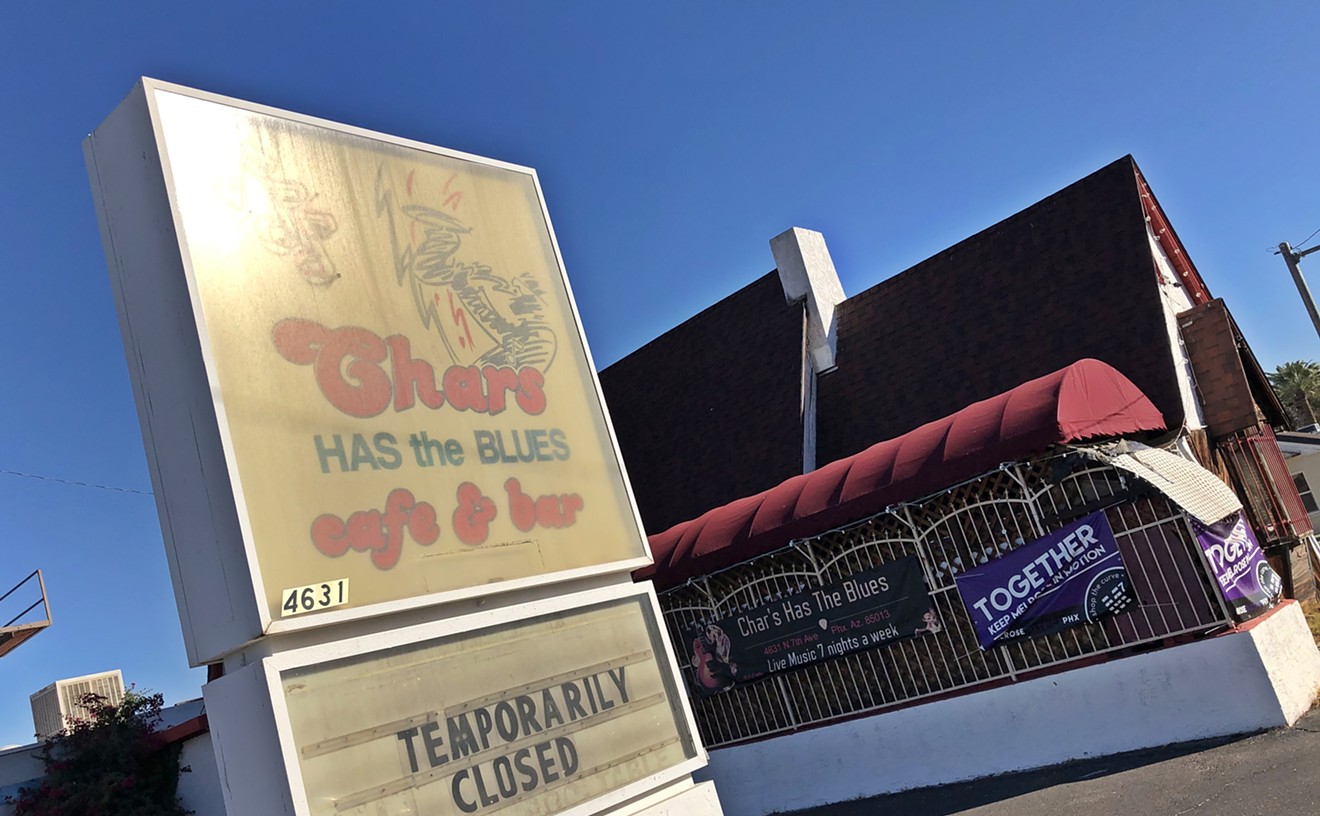But even Berry wasn't the first, not by a long shot. Sex began exposing itself in American popular music long before there were even Victrolas. The blues, for instance, have always had players and listeners that delighted in explicit lyrics and primal rhythms. The first time that sex entered popular music en masse, however, was during the big-band era. As proof, there is no better introduction to the origins of libido-levitating radio hits than two recently released boxed sets: Swing Time! The Fabulous Big Band Era 1925-1955 and Count Basie, The Complete Decca Recordings.
While Swing Time! chronicles the history of big-band--or swing-- music, it also shows how sex first slipped in and then out of the covers over the course of swing's 30-year reign. As a perfect companion piece, the Count Basie discs showcase the most carnal of all the swing bands as it seduced America during its 1937-1939 heyday. Swing music, like rock n' roll, is best defined by feel rather than words. Built around loose rhythms that "swung," the big bands upped both the volume and tempo of blues-based tunes. But swing wasn't just playing a song fast, it was turning an up-tempo beat into a driving, locomotive chug that forced whole crowds to shake body parts. A hot swing band would move the most self-conscious listeners into publicly gyrating in ways previously saved for honeymoons. The best swing bands were defined by their ability to empty all the chairs in the ballroom by means of the most infectious rhythms the bands could create. Our grandparents didn't call it swing music because they were swinging their arms, you know.
Swing Time! begins with the first swing bands of the late 20s and early 30s. These first swingers pummeled the dance floor with an awkward new beat supplied by the rhythms of banjos and tubas--the guitar and bass of their day. The Chocolate Dandies and Fletcher Henderson Orchestra flew through up-tempo dance numbers like "Birmingham Breakdown" and "Sugarfoot Stomp" with a primitive stab at loose and hip that sounds laughable today. Dances like the Charleston ruled back then, and when dancing bodies swung, it was still mostly below the elbows and knees. But not for long.
The midsection of Swing Time!'s 66 selections shows swing maturing into the macho braying of Pee Wee Russell's clarinet on Louis Prima's 1936 hit "Cross Patch" and the growling trumpet of Bunny Berigan on Tommy Dorsey's cover of the Irving Berlin song "Marie."
Ten years after the swing experiment began, big-band music was reaching its prime. A dozen horns could now play in perfect unison. The newest melodies were almost terminally catchy. Many of the soloists, having made names for themselves with distinct styles of playing, found themselves hounded by fans and groupies.
These best years of swing refuse to sound corny and flat even a half-century later. Crank up the volume on the best cuts on Swing Time! to rock n' roll level and see if you don't find yourself ecstatically writhing the same way your parents (or grandparents!) did. For an even more pungent taste of how radical this music was, modern listeners should search out the still-available video clips of swing's frenzied dance-floor scenes. They'll see the hardwood floors in front of the bandstands filled with panty-flashing and spread-eagle gyrating as the big bands roared through songs at breakneck tempo. Nobody shaking his thang in the most recent Prince video has come up with a move that wasn't already flaunted to the tune of "St. Louis Wiggle Rhythm" by the Mills Blue Rhythm Band way back in 1936. Swing dancing was vertical humping, safe sex and approved exhibitionism all at the same time. And all of it came to exist because swing had been built on finding the rhythms common to both music and nookie.
Sadly, big-band music eventually went limp with age. Cut 41 on Swing Time! is a bucket of cold water that drowns any lusty intentions born of early swing music. Ray Noble and His Orchestra play their 1939 hit "Cherokee" and offer a startling intro to the 15-year-long demise of the big-band era covered by the boxed set. Impressed with the grooves conjured up by the mostly black bandleaders of big band's past, Noble and other white bandleaders decided to get into the act. While greatly expanding big-band audiences, they were unable to find their crotch with both hands. Ray Noble's brass section feigns swing with all the eroticism of a drunken, potbellied accountant at a Chippendale tryout. Some of the new pretenders to the throne wisely gave up trying to ape the rhythmic thrusting of their mentor bands and settled for romantic music to hold hands by. Harry James' and Jimmy Dorsey's groups slowed the tempos down to ballad pace with the insipid lovey-dovey cooing they presented on "All or Nothing At All" and "Green Eyes." Most of the last two dozen cuts on Swing Time! are merely a big, bland song cycle about the slow castration of swing music.
Although its story has a sad ending, Swing Time! is a fine overview of swing music from puberty through impotence. Some of the major big-band hits are oddly overlooked, but a feeling for what made swing first succeed and then fail comes through loud and clear.
If you'd rather spend the same amount of time basking in unflagging big-band fertility, The Complete Decca Recordings of Count Basie will get you through the night just fine. These recently reissued 1937-1939 Decca sides cover the hottest period of Basie's band as it relentlessly and consistently pointed its horns at the bottom half of its audience. Like many of his peers on Swing Time!, Basie and his group eventually misplaced the goods, but not before creating the most ass-shaking swing in the history of the big-band era.
The story of Count Basie's territorial band explains how swing came to join sex and music together in the first place.
Anyone with a taste for the wild side of life would envy the rough-and-tumble scene that catapulted the young pianist William Basie to fame. Of the four cities jazz developed in--New Orleans, Chicago, New York and Kansas City--New Orleans and Kansas City were the most immoral and alive after dark. In K.C., prostitutes walked the streets without fear of arrest, gambling was legal, the clubs never closed and booze was readily available even during Prohibition. And Count Basie came to supply the soundtrack for the crazy scene.
Basie began playing piano with the local Bennie Moten Kansas City Orchestra. After Moten died in 1935, Basie took over and a year later brought the band's ribald K.C. style to New York City.
Besides making great dance music, the early incarnations of the Basie band also presented a slew of characters almost cartoon colorful. Tenor saxophonist Lester Young, heavy-lidded and generally under the influence of one substance or another, tossed off butter-smooth improvisations as complex as physics lectures. Vocalist Jimmy Rushing belted out a tough, corn-fed style of blues. The steam engine supplying all the underlying power came from bassist Walter Page, drummer Jo Jones and the chunk-chunk guitar of Freddie Green--a rhythm section as steady and brash as a jackhammer. All the key players seemed imbued with a different shade of sex appeal.
On top of it all sat Count Basie at the keys, playing three-note solos where other pianists would deliver 30. Basie chose to swing rather than assault, and it made him the rhythm king throughout the late 30s and 40s. Luckily, Decca Records caught it on disc for those who couldn't catch Basie and his cohorts live. Even now, listening to the reissues, it's not hard to imagine the shock some Iowan parochial schoolgirl must have felt when hearing the Basie band slam through raunchy, hot cuts like "Doggin' Around" and "Out the Window." Hearing Jimmy Rushing sing, "Don't show me my pretty baby/I'll break all the rules," she knew he wasn't talking about running red lights.
Tough economic times slowly ate away at Basie's band, at one point even forcing him to cut his group down to a mere seven pieces for several years. When he returned to the big-band format, the music scene had lost something important. Long gone was the primitive sexual drive that the Swing Time! collection shows dissipating over the course of a decade and a half. Today, saxophonist and former Basie employee Frank Foster is trying to keep both swing and the Basie Orchestra alive, but the music presented is far removed from the hot jazz on The Complete Decca Recordings. The new Basie sounds a lot like the washed-up blaring that finishes out Swing Time!.
But unlike a lot of the ever-lame white bands finishing out the Swing Time! box, at least Basie was a swing dog who had had his day. Fifty years after the fact, Basie's juices remain in The Complete Decca Recordings, still honking and shouting about the good ol' days when sex, rebellion and popular music were first equated. Although sex in music didn't begin with the big bands, it first became an integral part of popular music during that era. On that solid foundation, people like Louis Jordan, Elvis Presley and Chuck Berry would later whipsaw and nail down the carnal house that rock n' roll built.









